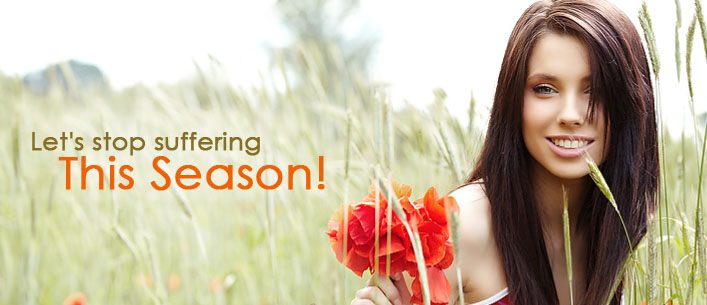Pollinosis among the most common allergic diseases in children.They suffer from 4,8 to 11,8% of children.Although hay fever can occur in a child already in their second year, the disease often goes undiagnosed.Development of hay fever is determined by sensitization - increased sensitivity to the impact of any environmental factor, in this case, the pollen, and it depends on what plants grow in this climate zone.In the occurrence and development of allergic reactions play an important role heredity - from parent to child transmission of genes responsible for predisposition to allergies.If pollinosis sick mother alone - the gene is transferred in 25% of cases, if the father and mother - at 50%.In some cases, signs of hay fever can occur not only during the flowering plants, but also in the winter.This is due to effects on the body of provoking factors: tobacco smoke, odor, color, cold, etc.Symptoms.This disease has a clear seasonality, repeated from year to year and coinciding with the period of flowering of certain plants.Symptoms of hay fever most intensively expressed in the early morning hours during the peak concentration of pollen in the air.Appears allergic conjunctivitis (lacrimation, photophobia, marked redness, itching and swelling of a sharp age, sensation of sand in the eyes), combined with allergic rhinitis (itchy nose, impaired nasal breathing, profuse clear liquid discharge from the nose, bouts of sneezing - 10 30 sneezes in a row).The child is breathing by mouth, wrinkles his nose, rubbing his palm, making it appear transverse wrinkle.The defeat of the nasal mucosa is usually bilateral.Swelling of the mucosa leads to a decrease in hearing, smell, headache.In contrast to the acute respiratory viral infections (ARI) for hay fever are rarely observed temperature rise and weakness, not a sharp pain in the throat, redness, rarely seen an increase in lymph nodes (auricular, submandibular, etc.).However, if at that moment the baby falls ill SARS, the symptoms of allergic rhinitis only intensify, distance themselves timing recovery and reduce the effect of medical allergy drugs.Severe manifestation of hay fever is bronchial asthma, usually combined with allergic rhinitis (rhinitis) and allergic conjunctivitis.Symptoms of pollen asthma typical of asthma in general: attacks of breathlessness, wheezing, crackles, audible even from a distance, a dry cough.By the above-mentioned manifestations of pollinosis can join headache, weakness, sweating, sleepiness, irritability and tearfulness, chills, fever, extreme tiredness.Treatment of pollinosis greatest therapeutic effect has specific hyposensitization, which are held in the offices of allergy.For non-specific therapy is used antihistamines.In cases where this treatment has no effect, appoint local glucocorticoid drugs (bekotid, beklomet) or prolonged (triamcinolone acetonide, methylprednisolone) actions.Widely used as a topical treatment preparations containing ephedrine, antihistamines, cromolyn sodium, corticosteroids.
Reavie shoots 62 to lead Deere Classic by 2 shots





















No comments:
Post a Comment
Note: Only a member of this blog may post a comment.